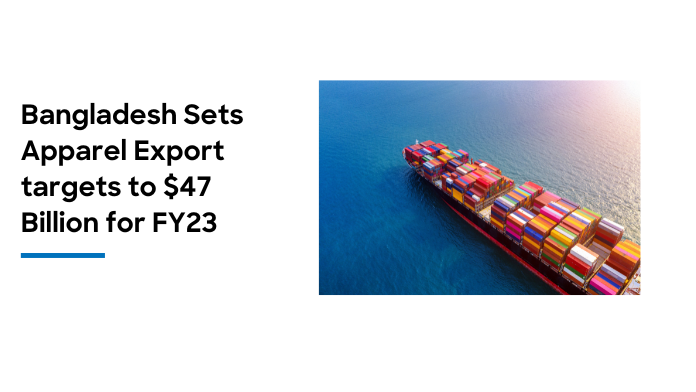Bangladesh has set a target of $47 billion in apparel export revenue in fiscal year 2022-23, with a 10.30% growth projection. Commerce Minister Tipu Munshi made the announcement at a press conference attended by industry representatives and government officials from the ministry and the Export Promotion Bureau.
The budget break-up
Knitwear goods are expected to earn $25.60 billion of the total target. The amount is 10.28% higher than real export earnings of $23.21 billion. Woven products will bring in $21.40 billion, with a 10.32 percent growth rate expected. Last year, it was $19.40.
Meanwhile, the government has set a total export target of $58 billion for goods and $9 billion for services. Bangladesh’s export earnings increased by 34.38 percent to $52 billion in FY22, with the RMG sector accounting for 42.61 billion of that total.
Export earnings from RMG products increased by 35.47 percent to $42.61 billion in FY22, up from $31.45 billion the previous year. Knitwear products earned $23.21 billion, up 36.88 percent from the previous fiscal year’s $19.91 billion, while woven items earned $19.49 billion, up 33.82 percent.
The impact of the ongoing Russia-Ukraine conflict was considered in setting the country’s apparel sector’s export target for the current fiscal year, according to Tipu Munshi. The target is attainable as global buyers are placing work orders because they have faith in exporters. They kept their commitment during the pandemic by ensuring timely delivery, according to Tipu.
Here’s what the exporters have to say:
The goal is attainable, but it is heavily dependent on the economic recovery in the export destinations. While the ongoing war, which has disrupted the supply chain and pushed up inflation, is a major concern for us, industry insiders said.
We are very optimistic about meeting the goal. According to BGMEA president Faruque Hassan, it will not be difficult to achieve if the government maintains the policy support provided last year to recover from the COVID-19 pandemic shocks.
Product demand is likely to fall as a result of the EU ND UD’s soaring inflation. According to Hassan, the cost of production increased due to a rise in raw material prices. In the current situation, the government should reduce the source tax to 0.5 percent, which was raised to 1% in the current fiscal year, he said. The business leader also urged not to raise home gas and electricity prices and to ensure continuous supply.
Also read: Medical Scrubs Market to Reach USD 140.64 Billion by 2028 | Fortune Business Insights













